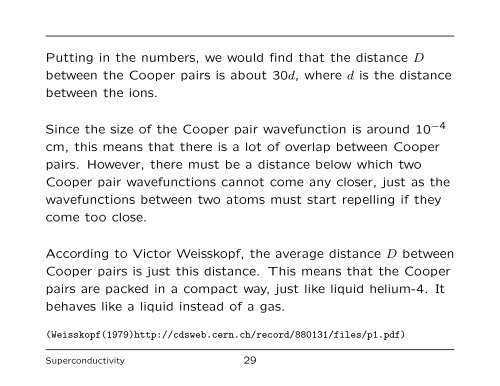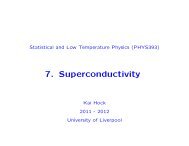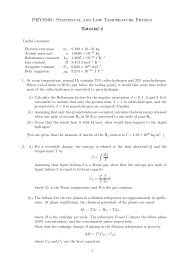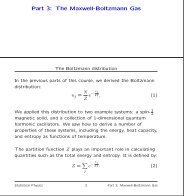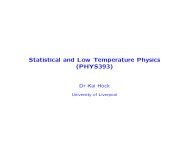The Nature of the Cooper Pair - University of Liverpool
The Nature of the Cooper Pair - University of Liverpool
The Nature of the Cooper Pair - University of Liverpool
You also want an ePaper? Increase the reach of your titles
YUMPU automatically turns print PDFs into web optimized ePapers that Google loves.
Putting in <strong>the</strong> numbers, we would find that <strong>the</strong> distance D<br />
between <strong>the</strong> <strong>Cooper</strong> pairs is about 30d, where d is <strong>the</strong> distance<br />
between <strong>the</strong> ions.<br />
Since <strong>the</strong> size <strong>of</strong> <strong>the</strong> <strong>Cooper</strong> pair wavefunction is around 10 −4<br />
cm, this means that <strong>the</strong>re is a lot <strong>of</strong> overlap between <strong>Cooper</strong><br />
pairs. However, <strong>the</strong>re must be a distance below which two<br />
<strong>Cooper</strong> pair wavefunctions cannot come any closer, just as <strong>the</strong><br />
wavefunctions between two atoms must start repelling if <strong>the</strong>y<br />
come too close.<br />
According to Victor Weisskopf, <strong>the</strong> average distance D between<br />
<strong>Cooper</strong> pairs is just this distance. This means that <strong>the</strong> <strong>Cooper</strong><br />
pairs are packed in a compact way, just like liquid helium-4. It<br />
behaves like a liquid instead <strong>of</strong> a gas.<br />
(Weisskopf(1979)http://cdsweb.cern.ch/record/880131/files/p1.pdf)<br />
Superconductivity 29


